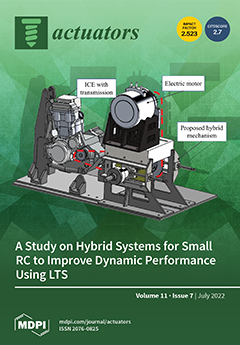This paper combines a synthetic jet actuator (SJA) and a leeward porous coating to alter the aerodynamic forces on a cylinder in crossflow at
= 4.2 × 10
. While SJAs and porous coatings are known to be effective flow
[...] Read more.
This paper combines a synthetic jet actuator (SJA) and a leeward porous coating to alter the aerodynamic forces on a cylinder in crossflow at
= 4.2 × 10
. While SJAs and porous coatings are known to be effective flow control methods in isolation, their combined effect has not been studied. A 2D numerical model was created of a cylinder with a SJA at 90° and 100° leeward porous coating. The model was validated using accompanying water tunnel tests. The combined model was tested for dimensionless frequencies 0.15
4 and compared to reference models. For
1, using only the SJA increases the cylinder drag coefficient (
). Combining a porous coating with the SJA in that regime lowers the
values by 15–21%, and causes an overall reduction in
compared to the smooth cylinder baseline case. However, using only the porous coating causes a superior 35% reduction in
. For
1, the combined SJA and porous coating configuration did not differ from the SJA only configuration, achieving the largest drag reduction of 45% at
= 4. The flow control mechanisms of the SJA and porous coating do not combine constructively in this current setup. However, the porous coating is beneficial for
1, causing an overall drag reduction even when the active SJA tends to increase drag.
Full article





